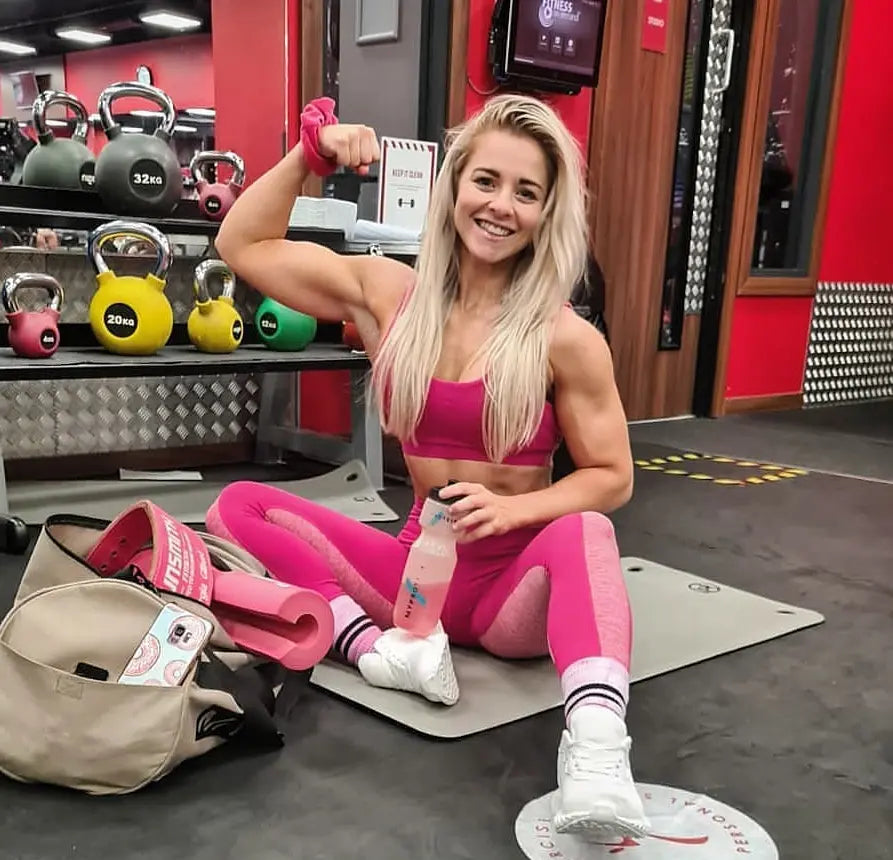
6 Best Exercises For Weight Loss
As with any fitness goal, losing weight is more than just picking up a few exercises and slugging through it. You have to have a plan - diet, exercise – and reasonable, realistic goals you can keep checking off to keep yourself going because trust us when we say it’s going to take a lot of willpower to achieve any sort of self-transformation. It’s often a slow, arduous process, but so worth it in the end.
It pays to know what you’re doing because you’ll likely experience setbacks throughout, like plateaus (that’s when you experience a sudden and dramatic decrease in the noticeable results of a workout). When that happens, you know to shift gears and adapt, so you can continue to lose weight until you hit that sweet spot or number on the tape measure or weighing scale.
Exercising is not only great for losing weight, it will also help you get stronger bones (super important as you age), reduce risk of chronic health issues, and help improve your mood and overall mental health.
1. Walking
It might sound really basic, but walking is actually a great, low-impact exercise (meaning you won’t stress your joints) for losing weight, especially for beginners.
Harvard Health estimates that a 155-pound (70 kg) individual walking at a moderate pace of 4 mph (6.4 km/h) for 30 minutes burns around 167 calories.
It’s convenient, easy to do, and it also gives you a great opportunity to explore your neighborhood and familiarize yourself with an area more.
No equipment needed, except comfortable clothes and footwear. Start by incorporating 30 minute “excursions” in your neighborhood during your days off from work, and gradually increase it to more days and longer walks.

2. Jogging or Running
When you jog, you’re generally going about 4 to 6 mph (or 6.4 to 9.7 km/h), while running is faster than 6 mph (9.7 km/h).
Both are great exercises for losing weight, and similar to the first entry on this list, requires no equipment except comfortable clothes you can sweat in and appropriate footwear that will cushion your heels.
A 155-pound (70 kg) individual can burn approximately 298 calories per 30 minutes of jogging, or approximately 372 calories per 30 minutes of running.
Jogging or running is also great for burning off visceral fat, a.k.a. belly fat. It’s this type of fat that wraps around your internal organs and is linked to heart disease and diabetes.
Start by jogging for 30 minutes on your days off from work. Gradually add days, and eventually progress to running. If you feel that it’s straining your joints, jog or run on softer surfaces like grass.
Some treadmills also have built-in cushioning, which makes it easier on our joints. Jogging, whether on the sidewalk, track or treadmill, is one of the best exercises for weight loss.

3. Cycling
If walking, jogging, or running doesn’t sound that appealing to you, try cycling. It’s great for many of the reasons the previous 2 entries on this list are, except that, of course, you do need a bicycle to do it.
You can cycle around the neighborhood and explore it while losing weight, or hop on a stationary bike at the gym.
A 155-pound (70 kg) individual can burn around 260 calories per 30 minutes of cycling at a moderate pace on a stationary bike, or 298 calories on a bicycle at a moderate pace of 12 to 13.9 (19 to 22.4 km/h).
Cycling is a great low-impact exercise for people of all fitness levels.

4. Bodyweight Training
If you want to get fit, then weight training is something you’ll want to do eventually. With stronger muscles (and bones) from doing strength training exercises, you’ll burn calories faster. You’ll not only enhance your strength, but your power, endurance, speed, and flexibility as well.
And bodyweight training is a great precursor for that. Basically, these are strength training exercises that use your own weight to provide resistance against gravity instead of using weights like dumbbells (so you don’t really need any equipment save for comfortable clothes and shoes).
Basic bodyweight movements are squats, lunges, push-ups, pull-ups, rows, and plank variations. There are innumerable variations of bodyweight exercises, but these are the basics and what you need to build a great foundation to help you perfect your form as you gradually move on to weight training exercises that use various equipment. Once you get the basics down, you can develop your own exercise routine.

5. Weight Training
When your body has tasted what squats, lunges, push-ups, and pull-ups taste like, it’s time to incorporate weight training into your fitness journey.
We mentioned earlier that weight training lets you burn calories faster – that’s because it helps increase your metabolic rate. One study showed that 11 minutes of strength-based exercises performed 3 times per week resulted in a whopping 7.4% increase in metabolic rate on average. This translates to roughly burning about 125 additional calories per day. It also raises your resting metabolic rate, so you’re burning more calories even at rest.
Some basic equipment you’ll want to start with are dumbbells, kettlebells, and barbells. With these, you can do hundreds of exercises and their different variations.
Check out our other articles, POWERLIFTING FOR WEIGHT LOSS and WEIGHTLIFTING FOR BEGINNERS.

6. Interval Training
Wrapping up this list is high-intensity interval training or HIIT. It basically refers to exercising in short, intense bursts that alternate with recovery periods.
You can incorporate HIIT into many exercises such as jogging, running, cycling, etc. – with HIIT, you can burn 25% to 30% more calories than if you were to perform the exercise at a moderate, steady pace.
For example, if you’re cycling, pedal as fast and hard as you can for 30 seconds, then keep a steady, moderate pace for a minute, and repeat until your exercise set ends.
It’s an effective weight loss strategy, all you need to do is change your pace while exercising and you'll really be burning calories.
What to do when you hit a plateau:
As you lose weight, it will be harder and harder to see noticeable results. When you hit a plateau and don’t see noticeable improvements anymore, change your approach – that includes mixing up your diet and exercise routines.
Increase your exercise intensity and/or frequency, and keep on keeping on.
Make sure you’re exercising safely by wearing the necessary gear – check out our shop here!
See also: HOW CAN YOU COMBINE INTERMITTENT FASTING WITH LIFTING WEIGHTS.





